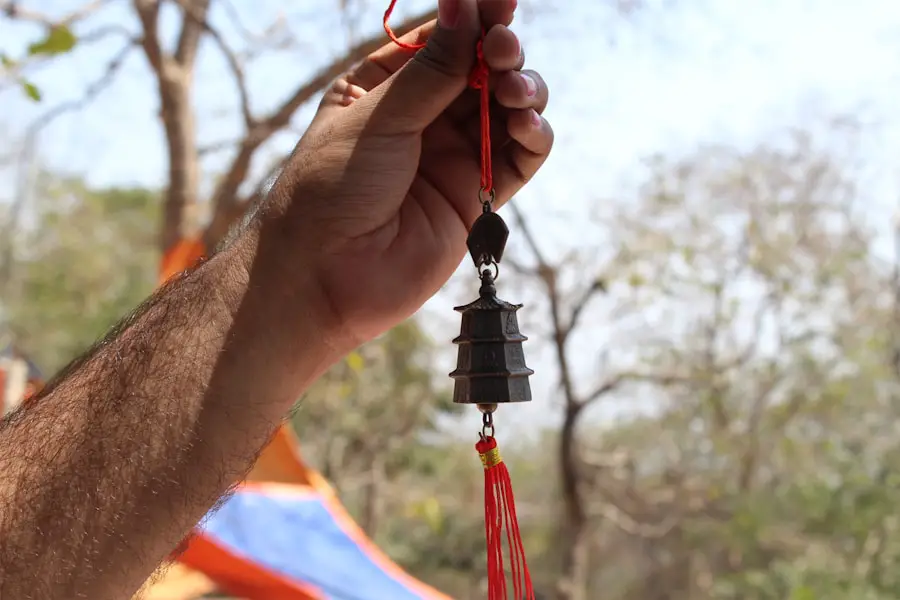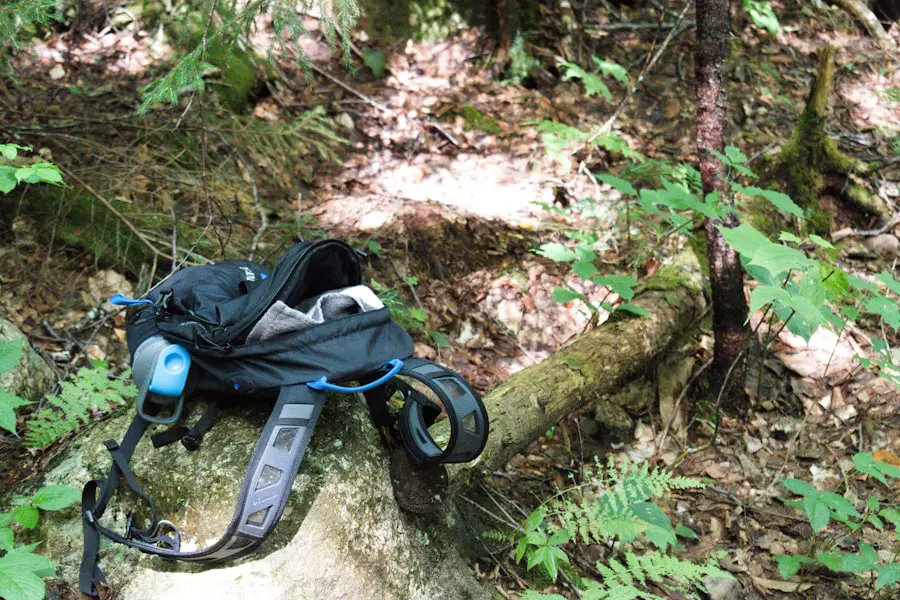Hiking poles have become an essential piece of gear for many outdoor enthusiasts, providing stability, support, and balance on uneven terrain. However, the benefits of hiking poles extend beyond their use during the trek; they also play a crucial role in ensuring safety and comfort. When not in use, improperly secured hiking poles can become a hazard, potentially causing injury to the hiker or others nearby.
For instance, if poles are allowed to dangle loosely from a backpack, they can snag on branches or rocks, leading to falls or accidents. Therefore, understanding the importance of securing hiking poles is paramount for any hiker looking to enhance their outdoor experience. Moreover, securing hiking poles properly can also prolong their lifespan.
Hiking poles are often made from lightweight materials such as aluminum or carbon fiber, which can be susceptible to damage if not handled correctly. When poles are left unsecured, they may be subjected to unnecessary stress or impact, leading to bends or breaks that could render them unusable. By taking the time to secure them properly, hikers can ensure that their equipment remains in good condition, ready for future adventures.
This attention to detail not only enhances safety but also contributes to a more enjoyable hiking experience.
Key Takeaways
- Securing your hiking poles is important to prevent loss or damage during your hike.
- There are different methods for securing hiking poles to your backpack, including using loops, straps, or dedicated attachment systems.
- When choosing the right attachment system for your backpack, consider the ease of use, security, and compatibility with your hiking poles.
- To secure hiking poles safely and securely, make sure they are tightly fastened and balanced on your backpack.
- Adjust and balance your backpack with hiking poles attached to ensure comfort and stability while hiking.
Different Methods for Securing Hiking Poles to Your Backpack
There are several methods for securing hiking poles to a backpack, each with its own advantages and disadvantages. One common method is to use the built-in straps or loops that many backpacks come equipped with. These straps are designed specifically for holding trekking poles and can often be adjusted to accommodate different pole sizes.
To use this method effectively, hikers should ensure that the poles are positioned vertically along the side of the backpack, with the tips facing downward. This orientation minimizes the risk of snagging and allows for a more streamlined profile while hiking. Another popular method involves using carabiners or clips to attach the poles to the exterior of the backpack.
This approach offers versatility, as hikers can choose where to attach the poles based on their personal preference and the design of their backpack. For example, some may prefer to clip the poles to the front of the pack for easy access, while others might opt for the sides to maintain a balanced load. When using carabiners, it is essential to select high-quality options that can withstand the rigors of outdoor use.
Additionally, ensuring that the clips are securely fastened will prevent any accidental drops during the hike.
Choosing the Right Attachment System for Your Backpack

Selecting the right attachment system for securing hiking poles is crucial for both functionality and comfort. Different backpacks come with various attachment systems, including straps, loops, and even specialized pockets designed for trekking poles. When choosing a backpack, hikers should consider how often they plan to use their poles and how quickly they need access to them.
For those who frequently navigate steep or challenging terrain, a backpack with easily accessible pole attachments may be more beneficial than one with less convenient options. Furthermore, it is essential to consider the weight distribution of the backpack when selecting an attachment system. A well-balanced load can significantly enhance stability and reduce fatigue during long hikes.
For instance, if a hiker attaches their poles too high on the backpack, it may cause an imbalance that leads to discomfort or strain on one side of the body. Conversely, securing them too low may create a risk of tripping or snagging on obstacles. Therefore, finding a system that allows for proper weight distribution while keeping the poles secure is vital for an enjoyable hiking experience.
Tips for Securing Hiking Poles Safely and Securely
| Tip | Description |
|---|---|
| Adjust the Straps | Make sure the straps are adjusted to fit snugly around your wrists to prevent the poles from slipping out of your hands. |
| Proper Grip | Hold the poles with a firm but relaxed grip to maintain control and stability while hiking. |
| Check the Locking Mechanism | Ensure that the locking mechanism of the poles is securely engaged to prevent unexpected collapses. |
| Use Rubber Tips | Attach rubber tips to the ends of the poles to improve traction and prevent slipping on rocky or uneven terrain. |
| Inspect the Poles Regularly | Check the poles for any signs of wear and tear, such as cracks or bent sections, and replace them if necessary. |
To ensure that hiking poles are secured safely and securely, hikers should follow several best practices. First and foremost, it is essential to check that all attachments are tight and secure before setting out on a hike. Loose straps or clips can lead to unexpected movement of the poles during transit, which can be both distracting and dangerous.
Regularly inspecting these attachments throughout the hike can also help identify any issues before they become problematic. Another important tip is to consider the terrain when securing hiking poles. In rocky or uneven areas, it may be wise to position the poles in a way that minimizes their exposure to potential hazards.
For example, placing them on the side of the backpack that faces away from steep drops or dense underbrush can help prevent accidental damage or injury. Additionally, hikers should practice securing their poles at home before heading out on a trip. Familiarity with the attachment system will make it easier to secure and access poles quickly when needed.
How to Adjust and Balance Your Backpack with Hiking Poles Attached
When hiking with poles attached to a backpack, adjusting and balancing the load becomes crucial for maintaining comfort and stability. A well-balanced backpack allows for better weight distribution across the body, reducing strain on muscles and joints. To achieve this balance, hikers should first ensure that their backpack is fitted correctly; this includes adjusting shoulder straps, hip belts, and load lifters as needed.
Once the backpack is properly fitted, hikers should assess how the attached hiking poles affect weight distribution. If the poles are causing an imbalance—such as pulling one side down more than the other—adjustments may be necessary. This could involve repositioning the poles or redistributing other gear within the pack.
For instance, if heavier items are placed on one side of the backpack, it may be beneficial to move them closer to the center or shift lighter items toward the side with the poles. This careful attention to balance will enhance overall stability while navigating various terrains.
Ensuring Easy Access to Your Hiking Poles While Hiking

Easy access to hiking poles while on the trail is essential for maximizing their utility during a hike. Hikers often encounter varying terrain that requires quick adjustments in support; therefore, having poles readily available can make a significant difference in performance and safety. One effective way to ensure easy access is by attaching poles in a manner that allows for quick release without having to remove the entire backpack.
For instance, some backpacks feature side pockets or mesh compartments specifically designed for holding trekking poles securely while still allowing for easy retrieval. Hikers can practice reaching for their poles while walking at home or on less challenging trails to develop muscle memory for quick access during more strenuous hikes. Additionally, considering how frequently one will need to use their poles can influence where they are attached; if frequent stops are anticipated, positioning them at the front of the pack may be more advantageous than keeping them on the sides.
Securing Hiking Poles in Different Terrain and Weather Conditions
The terrain and weather conditions encountered during hikes can significantly impact how hiking poles should be secured. In rocky or steep environments, it is crucial to ensure that poles are tightly secured to prevent them from becoming loose or falling out during movement. Using additional straps or bungee cords can provide extra security in these situations, especially when navigating challenging landscapes where stability is paramount.
Weather conditions also play a role in how hiking poles should be secured. In wet or muddy environments, hikers may want to consider using waterproof covers or bags for their poles when not in use. This precaution helps protect both the poles and other gear from moisture damage while ensuring that they remain clean and functional when needed again.
Additionally, in snowy conditions, securing poles with snow baskets can provide better support and prevent sinking into soft snow while maintaining proper attachment methods.
Maintaining and Caring for Your Hiking Pole Attachments
Proper maintenance and care of hiking pole attachments are essential for ensuring longevity and functionality over time. Regularly inspecting straps, clips, and other components for wear and tear can help identify potential issues before they become significant problems. For example, frayed straps may need replacing before they fail during a hike, which could lead to lost equipment or safety hazards.
Cleaning is another critical aspect of maintaining hiking pole attachments. After each hike, especially in muddy or wet conditions, it is advisable to wipe down all components with a damp cloth to remove dirt and debris that could cause wear over time. Additionally, checking for rust or corrosion on metal components is vital; applying a light lubricant can help protect against moisture damage and ensure smooth operation when adjusting or securing poles in the future.
By taking these steps regularly, hikers can extend the life of their equipment and enhance their overall outdoor experience.
If you’re planning a hiking trip and looking for ways to optimize your gear, you may also be interested in learning how to choose the best travel guidebook for your next adventure. A good guidebook can provide valuable information on trails, landmarks, and safety tips to enhance your hiking experience. Check out this article on how to choose the best travel guidebook to ensure you’re well-prepared for your next outdoor excursion.
Love travel? Join Our Facebook Community For More Tips.
FAQs
What are the benefits of attaching hiking poles to a backpack?
Attaching hiking poles to a backpack can free up your hands and provide easy access to the poles when not in use. It also helps to distribute the weight of the poles and keeps them secure during hiking.
How can I attach hiking poles to a backpack?
There are various methods to attach hiking poles to a backpack, including using external loops or straps on the backpack, using carabiners, or utilizing a dedicated pole attachment system if your backpack has one.
Are there specific backpacks designed for attaching hiking poles?
Yes, some backpacks come with built-in pole attachment systems, such as bungee cords, loops, or straps, to easily secure hiking poles to the pack.
Can I attach hiking poles to any type of backpack?
While many backpacks have external loops or straps that can be used to attach hiking poles, not all backpacks are designed for this purpose. It’s important to check if your backpack has the necessary features or consider using alternative attachment methods.
Are there any safety considerations when attaching hiking poles to a backpack?
When attaching hiking poles to a backpack, it’s important to ensure that they are securely fastened to prevent them from falling off during hiking. Additionally, be mindful of the added weight and balance of the backpack when attaching hiking poles.
